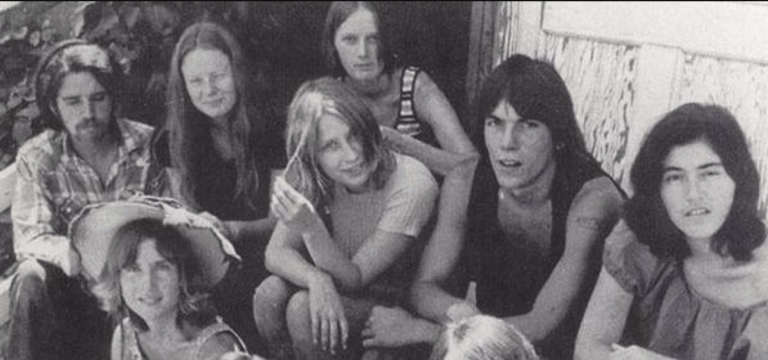
5 Black People In STEM Fields Who Changed American Life

George Washington Carver, who did astonishing things with peanuts, might be the first and only black scientist many Americans can name. The truth is, many Black inventors and creators have been making contributions in highly technical fields throughout American history despite the challenges faced by white supremacy and patriarchy. Some of them have had a hand in ventures that impact our lives tremendously.
John H. Thompson
For years, the internet was mostly static boring sad pages. Did you know that a black man invented the programming language which helped the Internet advance from that godawful sorrow into the wonderful universe of animations, video content and even games? John H. Thompson, a product of NYC public schools and MIT, invented a computer scripting language called Lingo. Lingo was the juice behind the products that came out of Macromedia (now owned by Adobe) and other multimedia companies. Thompson became a renowned authority on the language and other tools, writing many books on the language, and instructing others how to marry art and computer science in order to create the Internet you see today. He went on to work for George Lucas at Lucas Films for a while and teach graduate courses at NYU.
Percy Lavon Julian
The invention of the birth control pill can be argued as one of the most important sociological, medical, and economic advancements of the 20th century. Percy Lavon Julian, a black chemist, laid the foundation for pharmaceutical advances like this pill, and also corticosteroids with his pioneering work to derive synthetic hormones from plants. Julian faced a great deal of discrimination during his career due to systematic racism in academia and science fields. But this did not stop Julian’s beautiful mind from producing a host of other life changing inventions:
“During World War II, the fire-extinguishing Aero-Foam – the U.S. Navy’s “bean soup” – was Julian’s brainchild. This soy protein foam was used to smother oil and gasoline fires that erupted on aircraft carriers, before the flames could engulf the ships. Julian’s invention, a hydrolyzate of isolated soy protein, potentially saved the lives of thousands of American sailors.”
Dr. Patricia Bath
In 1973 the daughter of a subway operator and a domestic worker, Patricia Bath, became the first African-American to complete a residency in ophthalmology. After finishing her residency at Columbia University, Dr. Bath went on to amass a list of amazing accomplishments in her field. “Bath co-founded the American Institute for the Prevention of Blindness, which established that ‘eyesight is a basic human right.’” Later, becoming the first woman of any ethnicity to chair an ophthalmology residency in the United States was not enough for Dr. Bath. She re-defined an important eye surgery with her invention of the Laserphaco Probe. With this creation, she became the first African American female doctor to receive a medical patent. She now holds four. If your grandparents can view your graduation and wedding pics after their cataract surgery, you probably owe this woman a huge “thank you”.
Katherine G. Johnson
How many people can say they helped to send the first American into space? Katherine G. Johnson, a mathematician, is one of the few people on earth with these bragging rights. Johnson’s calculations also helped John Glenn become the first person to orbit the Earth. And in 1969, her bad-ass brain helped Apollo 11 navigate its trajectory to the moon. Dr. Johnson (she was the third black American to garner a PhD. in Mathematics) worked with a team of mathematically formidable women at Langley who comprised the precursor to NASA, but she was the “go to” for the calculations of the Apollo 11 mission. Decades after her extraordinary service, the one time teacher and stay-at-home mom was finally awarded “the nation’s highest civilian award, the Presidential Medal of Freedom, from President Barack H. Obama.”
Julian Francis Abele
Julian Francis Abele was a descendant of Absalom Jones, co-founder of the Free African Society. A talented and prolific architect, he was the first black graduate of what is now known as the Graduate School of the Arts of the University of Pennsylvania. Abele worked on the plans for hundreds of buildings, many of them now icons of American learning and culture. For instance, he designed the west campus of Duke University. His role in this venture was downplayed—but not totally unknown—until the 1986 campus protests for divestment in South Africa due to apartheid. Abele also contributed to design for the Philadelphia Museum of Art, The Central Branch of the Free Library of Philadelphia, and the Widener Memorial Library at Harvard University.
Today, the lack of African-Americans in STEM fields have been bemoaned all the way to the White House. Why is diversity in this sector so important? Without the aforementioned technical geniuses, who knows what some things we now take for granted would be like now? The Internet. Human Sight. Space Exploration. Sex. The Rocky Steps (yes, imho, way more important than Harvard library). These five people faced tremendous adversity to advance their fields by leaps and bounds and changed our national culture, too. Perhaps we need to shout their accomplishments so that present and future generations will know. ![]()







